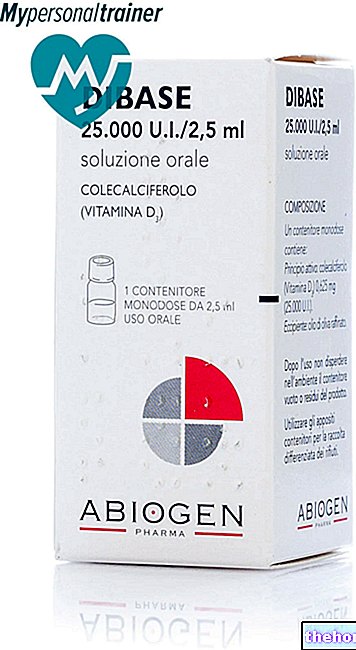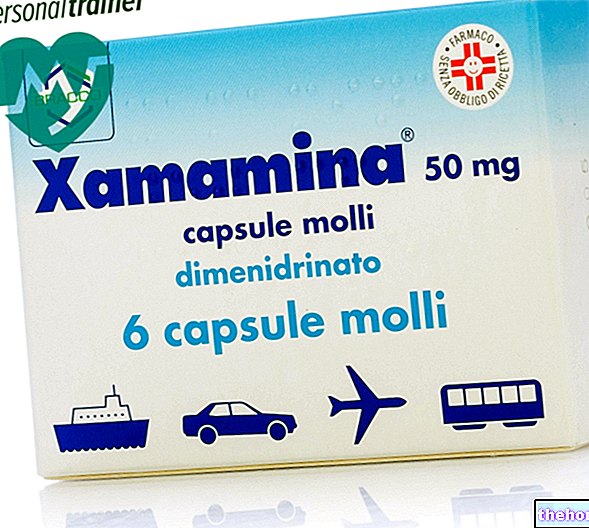Active ingredients: Ciprofloxacin, Fluocinolone (Fluocinolone acetonide)
CEXIDAL 3 mg / ml + 0.25 mg / ml ear drops, solution
Why is Cexidal used? What is it for?
PHARMACOTHERAPEUTIC CATEGORY
Otological, corticosteroid and anti-infective in combination.
THERAPEUTIC INDICATIONS
Local treatment of acute diffuse otitis externa of bacterial origin, in the absence of perforations of the tympanic membrane.
Contraindications When Cexidal should not be used
Cexidal should not be used in the following cases:
- hypersensitivity to fluocinolone, ciprofloxacin or other quinolones or to any of the excipients.
- viral infections of the external ear canal, including chicken pox and herpes simplex.
- to patients under seven years of age.
Precautions for use What you need to know before taking Cexidal
The medicine should not be ingested or injected.
Treatment should be discontinued if symptoms of urticaria or any other signs of local or systemic hypersensitivity appear.
The safety and efficacy of Cexidal ear drops solution have not been studied in the presence of perforated tympanic membrane. Therefore, Cexidal ear drops solution should be used with caution in patients with known or suspected perforation or where there is a risk of perforation. of the tympanic membrane.
The medicinal product should not be used concomitantly with other otological drugs.
When applying the medicine, avoid contact between the dropper and the ear or fingers in order to prevent possible contamination.
Interactions Which drugs or foods can modify the effect of Cexidal
Tell your doctor or pharmacist if you have recently taken any other medicines, even those without a prescription.
Ciprofloxacin for auricular use has not been the subject of specific drug interaction studies.
However, systemic administration of some quinolones has been shown to interfere with the metabolism of caffeine, enhance the effects of the oral anticoagulant warfarin and its derivatives, and have been associated with transient increases in serum creatinine in patients concomitantly treated with cyclosporine.
Furthermore, ciprofloxacin inhibits the CYP1A2 enzyme and this may lead to an increase in the serum concentration of substances administered concurrently and metabolised by this enzyme (eg theophylline, clozapine, tacrine, ropinirole, tizanidine).
Patients taking these substances concomitantly with ciprofloxacin should therefore be closely monitored for clinical signs of overdose, and determination of serum concentrations, particularly theophylline, may be necessary.
Warnings It is important to know that:
Moderate to severe phototoxicity phenomena, manifesting as skin hyperactivity upon sun exposure, have been observed in patients exposed to direct sunlight while being treated with some drugs belonging to the quinolone class.
Excessive exposure to sunlight should be avoided. In case of phototoxicity, discontinue therapy.
In ear use, scrupulous medical monitoring is required in order to promptly determine the need for any alternative therapeutic measures.
As with all antibacterial drugs, prolonged use of ciprofloxacin can give rise to the growth of non-sensitive microorganisms, including fungi. Any superinfection should be treated with appropriate therapy.
Serious hypersensitivity (anaphylactic) reactions, sometimes fatal, sometimes after the first administration, have been reported in patients receiving systemic quinolone therapy.
Some reactions were accompanied by cardiovascular collapse, loss of consciousness, tingling, pharyngeal or facial edema, dyspnoea, hives and itching. Only a few patients had a clinical history of hypersensitivity. Anaphylactic reactions require immediate emergency treatment with adrenaline and other resuscitation measures, including oxygen, intravenous fluids, intravenous antihistamines, corticosteroids, vasopressor amines, and interventions to maintain a patent airway.
Important information about some of the excipients
The medicine contains para-hydroxybenzoates which can cause allergic reactions (including delayed).
Pregnancy and breastfeeding
Ask your doctor or pharmacist for advice before taking any medicine.
No clinical studies have been performed in pregnant patients, therefore the medicine should be used during pregnancy only in cases of absolute necessity, and only if the expected benefit justifies the potential risk to the fetus.
As there is very limited information available on the excretion of Cexidal administered into the ear into breast milk, the product should only be administered during lactation if the benefits are considered to outweigh the possible risks.
Effects on ability to drive and use machines
In view of the route of administration and based on available clinical data, it is considered unlikely that the medicinal product will have any effect on the ability to drive and use machines.
Dosage and method of use How to use Cexidal: Dosage
Apply 4-6 drops into the ear canal every 8 hours. The duration of the treatment should be 7-8 days.
Instructions for Use
For a correct use of the product, the bottle should be warmed a little in the hands before use. This reduces the sensation of cold caused by the application of the drug in the ear. At the time of administration, tilt the head to the side and keep it in this position for about 30 seconds to help the drops flow into the external ear canal. If the ear canal is particularly narrow, the outflow towards the eardrum can be facilitated by first pressing the bottom of the canal with a finger and then pulling the auricle upwards so as to let the air out of the canal which will be replaced by the liquid.
Overdose What to do if you have taken too much Cexidal
No data on overdose are available. Should the product be swallowed by mistake, treatment should include gastric lavage or gastric emptying by induced vomiting, administration of activated charcoal and magnesium and calcium antacids.
In case of accidental intake of an excessive dose of Cexidal, notify your doctor immediately or go to the nearest hospital.
IF YOU HAVE ANY DOUBTS ABOUT USING CEXIDAL, CONTACT YOUR DOCTOR OR PHARMACIST.
Side Effects What are the side effects of Cexidal
Like all medicines, Cexidal can cause side effects, although not everybody gets them.
Undesirable effects reported in clinical trials with an incidence of 0.3 percent (uncommon) are tinnitus, headache, local itching and hyperesthesia at the time of application.
Expiry and Retention
Expiry: see the expiry date indicated on the package.
Warning: do not use the medicine after the expiry date indicated on the package.
The expiry date refers to the unopened, correctly stored medicine.
Once opened, use the medicine within 1 month.
Medicines should not be disposed of via wastewater or household waste. Ask your pharmacist how to throw away medicines you no longer use. This will help protect the environment.
Keep this medicine out of the reach and sight of children.
Deadline "> Other information
COMPOSITION
Each ml of solution contains:
Active ingredients: Ciprofloxacin hydrochloride monohydrate 3.49 mg (equal to Ciprofloxacin (INN) 3 mg) and Fluocinolone acetonide (INN) 0.25 mg
Excipients: Methyl parahydroxybenzoate, propyl parahydroxybenzoate, povidone, diethylene glycol monoethylether, Glycereth-26 (composed of glycerin and ethylene oxide), hydrochloric acid and purified water.
PHARMACEUTICAL FORM AND CONTENT
Ear drops in solution. Bottle of 10 ml
Source Package Leaflet: AIFA (Italian Medicines Agency). Content published in January 2016. The information present may not be up-to-date.
To have access to the most up-to-date version, it is advisable to access the AIFA (Italian Medicines Agency) website. Disclaimer and useful information.
01.0 NAME OF THE MEDICINAL PRODUCT -
CEXIDAL 3 MG / ML + 0.25 MG / ML EAR DROPS, SOLUTION
02.0 QUALITATIVE AND QUANTITATIVE COMPOSITION -
Each ml of solution contains:
Ciprofloxacin hydrochloride monohydrate 3.49 mg
(equal to Ciprofloxacin) 3 mg
Fluocinolone acetonide 0.25 mg
For the full list of excipients, see section 6.1.
03.0 PHARMACEUTICAL FORM -
Ear drops, solution.
04.0 CLINICAL INFORMATION -
04.1 Therapeutic indications -
Local treatment of acute diffuse otitis externa of bacterial origin, in the absence of perforations of the tympanic membrane.
Consider official guidelines on the appropriate use of antibacterial agents.
04.2 Posology and method of administration -
Apply 4-6 drops into the ear canal every 8 hours. The duration of the treatment should be 7-8 days.
Do not treat children under seven years of age.
Instructions for Use
For a correct use of the product, the bottle should be warmed a little in the hands before use. This reduces the sensation of cold caused by the application of the drug in the ear. At the time of administration, tilt the head to the side and keep it in this position for about 30 seconds to help the drops flow into the external ear canal. If the ear canal is particularly narrow, the outflow towards the eardrum can be facilitated by first pressing the bottom of the canal with a finger and then pulling the auricle upwards so as to let the air out of the canal which will be replaced by the liquid.
04.3 Contraindications -
Cexidal should not be used in the following cases:
* hypersensitivity to fluocinolone, ciprofloxacin or other quinolones or to any of the excipients.
* viral infections of the external ear canal, including chicken pox and herpes simplex.
* to patients under seven years of age.
04.4 Special warnings and appropriate precautions for use -
The medicine should not be ingested or injected.
Treatment should be discontinued if symptoms of urticaria or any other signs of local or systemic hypersensitivity appear.
The safety and efficacy of Cexidal ear drops solution have not been studied in the presence of perforated tympanic membrane. Therefore, Cexidal ear drops solution should be used with caution in patients with known or suspected perforation or where there is a risk of perforation. of the tympanic membrane.
When applying the medicine, avoid contact between the dropper and the ear or fingers in order to prevent possible contamination.
The medicine should not be taken concomitantly with other otological drugs.
Moderate to severe phototoxicity phenomena, manifesting as skin hyperactivity upon sun exposure, have been observed in patients exposed to direct sunlight while being treated with some drugs belonging to the quinolone class.
Excessive exposure to sunlight should be avoided. In case of phototoxicity, discontinue therapy.
In ear use, scrupulous medical monitoring is required in order to promptly determine the need for any alternative therapeutic measures.
As with all antibacterial drugs, prolonged use of ciprofloxacin can give rise to the growth of non-sensitive microorganisms, including fungi. Any superinfection should be treated with appropriate therapy.
Serious hypersensitivity (anaphylactic) reactions, sometimes fatal, sometimes after the first administration, have been reported in patients receiving systemic quinolone therapy.
Some reactions were accompanied by cardiovascular collapse, loss of consciousness, tingling, pharyngeal or facial edema, dyspnoea, hives and itching. Only a few patients had a clinical history of hypersensitivity. Anaphylactic reactions require immediate emergency treatment with adrenaline and other resuscitation measures, including oxygen, intravenous fluids, intravenous antihistamines, corticosteroids, vasopressor amines, and interventions to maintain a patent airway.
The medicine contains para-hydroxybenzoates which can cause allergic reactions (including delayed).
04.5 Interactions with other medicinal products and other forms of interaction -
Ciprofloxacin for auricular use has not been the subject of specific drug interaction studies. However, systemic administration of some quinolones has been shown to interfere with the metabolism of caffeine, enhance the effects of the oral anticoagulant warfarin and its derivatives, and have been associated with transient increases in serum creatinine in patients concomitantly treated with cyclosporine.
Furthermore, ciprofloxacin inhibits the CYP1A2 enzyme and this may lead to an increase in the serum concentration of substances administered concurrently and metabolised by this enzyme (eg theophylline, clozapine, tacrine, ropinirole, tizanidine).
Patients taking these substances concomitantly with ciprofloxacin should therefore be closely monitored for clinical signs of overdose, and determination of serum concentrations, particularly theophylline, may be necessary.
04.6 Pregnancy and breastfeeding -
No clinical studies have been performed in pregnant patients, therefore the medicine should only be used during pregnancy in cases of absolute necessity, and only if the expected benefit justifies the potential risk to the fetus.
As there is very limited information available on the excretion of Cexidal administered into the ear into breast milk, the product should only be administered during lactation if the benefits are considered to outweigh the possible risks.
04.7 Effects on ability to drive and use machines -
No clinical evidence is available in this regard. However, considering the route of administration and the conditions of use, it is considered unlikely that the medicinal product will have an effect on the ability to drive and use machines.
04.8 Undesirable effects -
Undesirable effects reported in clinical trials with an incidence of 0.3 percent (uncommon) are tinnitus, headache, local itching and hyperesthesia at the time of application.
04.9 Overdose -
There are no data on overdose available. Should the product be swallowed by mistake, treatment should include gastric lavage or gastric emptying by induced vomiting, administration of activated charcoal and magnesium and calcium antacids.
05.0 PHARMACOLOGICAL PROPERTIES -
05.1 "Pharmacodynamic properties -
Medicinal product category: otologicals, corticosteroids and anti-infectives in association.
ATC code: S02CA03.
Fluocinolone is a corticosteroid with anti-inflammatory and analgesic properties. Ciprofloxacin is a synthetic antibiotic belonging to the group of fluocinolones. Its powerful bactericidal activity is expressed through the inhibition of bacterial DNA-gyrase which prevents the synthesis of DNA.
The MICs that define the sensitivity, intermediate sensitivity or resistance of microorganisms are S ≤ 1 mg / l and R> 2 mg / l.
The onset of bacterial resistance by particular microorganisms can vary with geographical areas and climate. Local data on bacterial resistance should be available, particularly in the presence of serious infectious outbreaks. This information, however, is only indicative for calculating the probability sensitivity of micro-organisms to the antibiotic.
The following table shows the known cases of bacterial resistance frequency in the European Union.
* Established clinical efficacy for susceptible species and approved clinical indications.
** The frequency of resistance to methicillin, generally observed in hospitals, is between 30% and 50%. This value refers to ciprofloxacin administered orally. The concentrations that are reached in-situ by means of topical-local action preparations they are considerably higher than those obtained systemically. Some aspects of the kinetics of concentrations in-situ, the chemical-physical conditions that can modify the activity of an antibiotic and the stability in-situ of the medicine still need to be verified.
Atypical bacteria
In vitro, ciprofloxacin is effective against some species of Mycobacteria: Mycobacterium tuberculosis, Micobacterium fortuitum and to a lesser extent against the Micobacterium kansasii and to an even lesser extent against the Micobacterium avium.
Cross resistances
The existence of cross-resistance between ciprofloxacin and other fluoquinolones has been demonstrated in-vitro. By virtue of the particular mechanism of action, no cross-resistance has been observed between ciprofloxacin and antibiotics belonging to other classes.
05.2 "Pharmacokinetic properties -
Otological administration
Based on the available data on oral administration, assuming complete absorption of the drug administered locally, a steady-state peak of about 3 ng / ml of ciprofloxacin can be calculated. Since the analytical detection threshold is approximately 5 ng / ml, pharmacokinetic studies are not possible with this product.
No blood concentrations of ciprofloxacin were detected in the blood of 12 children with acute otitis externa treated topically with ciprofloxacin 0.3% solution.
05.3 Preclinical safety data -
The ototoxicity of ciprofloxacin has been studied in animals both by topical local administration in the ear and by the intra-peritoneal route. histology of the inner ear.
06.0 PHARMACEUTICAL INFORMATION -
06.1 Excipients -
Methyl parahydroxybenzoate, propyl parahydroxybenzoate, povidone, diethylene glycol monoethyl ether, Glycereth-26 (composed of glycerin and ethylene oxide), hydrochloric acid and purified water.
06.2 Incompatibility "-
None known.
06.3 Period of validity "-
2 years.
After first opening the container: 1 month
06.4 Special precautions for storage -
Store at a temperature not exceeding 25 ° C
06.5 Nature of the immediate packaging and contents of the package -
10 ml opaque low density polyethylene bottle, closed with a high density polyethylene dropper cap.
06.6 Instructions for use and handling -
Not relevant.
07.0 HOLDER OF THE "MARKETING AUTHORIZATION" -
ITALCHIMICI S.p.A.
Via Pontina 5, Km 29.00
00040 Pomezia (RM)
08.0 MARKETING AUTHORIZATION NUMBER -
Cexidal 3 mg + 0.25 mg ear drops, solution - 1 bottle of 10 ml AIC: 037231053
09.0 DATE OF FIRST AUTHORIZATION OR RENEWAL OF THE AUTHORIZATION -
July 26, 2010
10.0 DATE OF REVISION OF THE TEXT -
February 2014




























